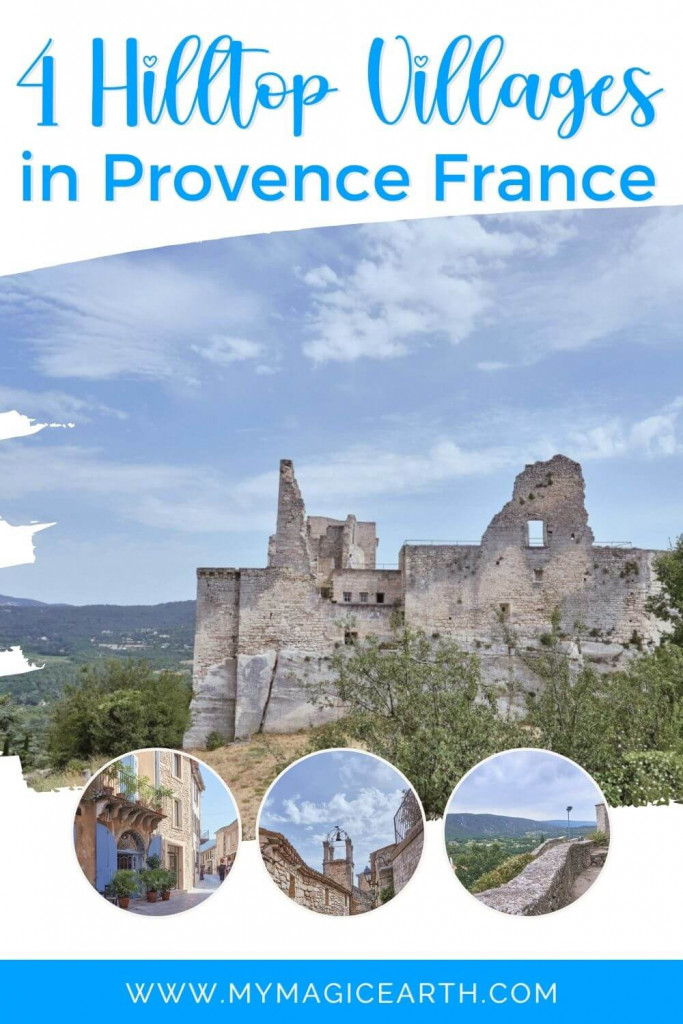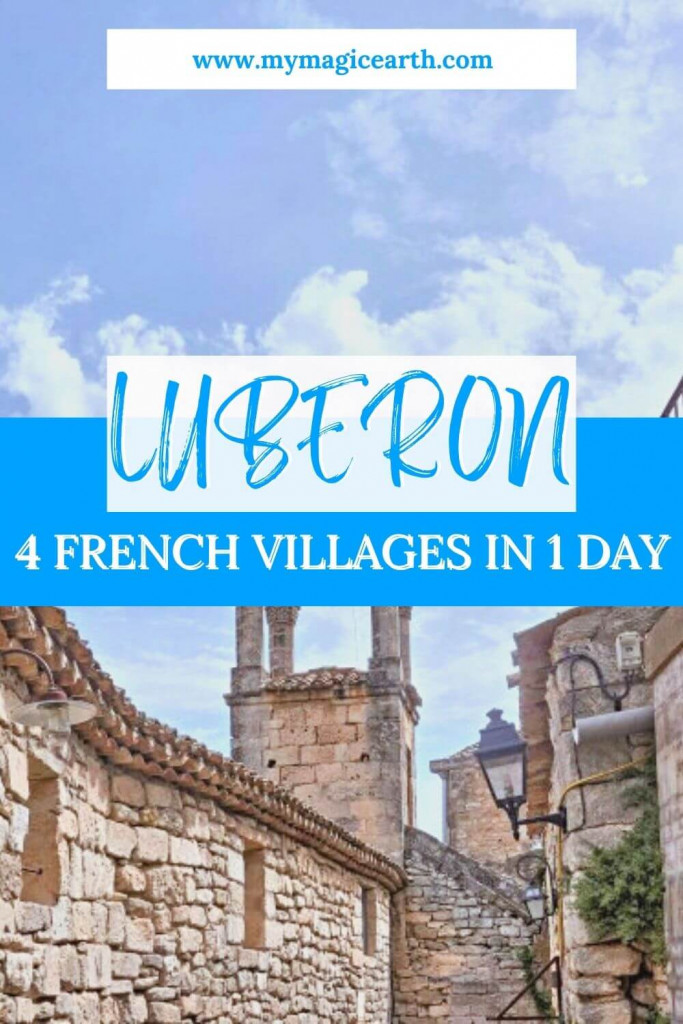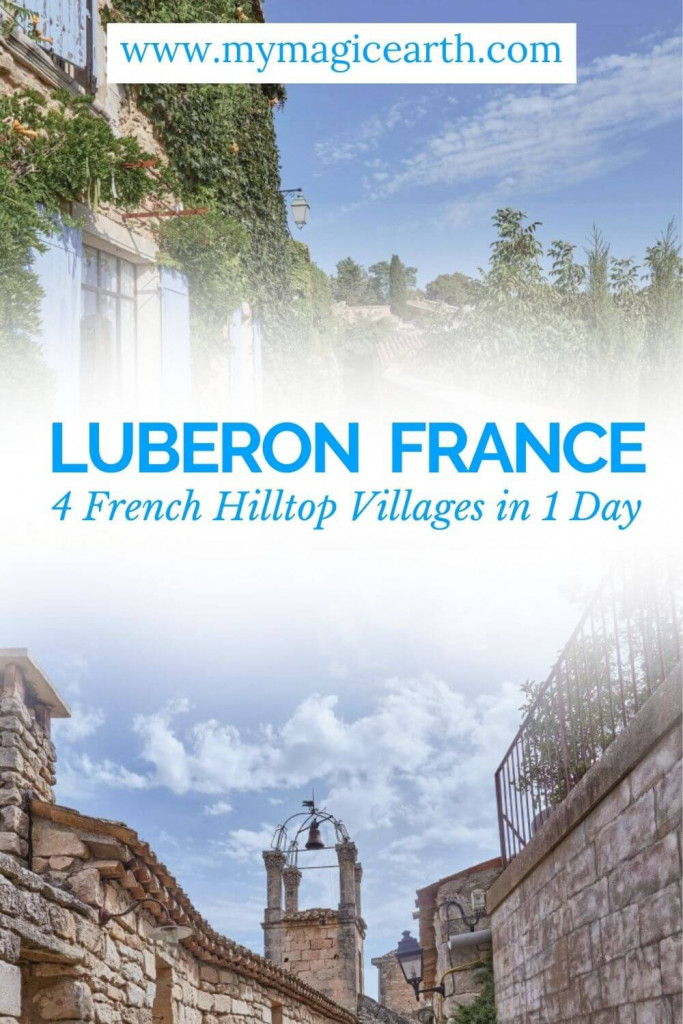A cluster of hilltop villages in Luberon is an oasis of serenity away from the bustling Marseille, France. These tranquil towns offer an off-the-beaten-path experience in the heart of Provence. During our two-week summer holiday in Provence, we went on a day trip to the Luberon National Park.
The summer in Provence was scorching, with temperatures hovering around 35°C nearly every day. However, the hilltop towns in Luberon enjoyed a refreshing cool breeze.
The four hilltop villages we visited in Luberon were conveniently located within a short distance from each other. We began our journey from our apartment in La Ciotat early in the morning, starting with Lourmarin, then continuing on to Bonnieux and Lacoste before reaching our final destination, Ménerbes. Throughout the day, we covered a total distance of approximately 250 kilometers.
The hilltop villages exhibit distinct characteristics that set them apart from each other. It would typically take us less than an hour to stroll through each village.. However, we spent an extended period to take photos and explore plenty of undiscovered corners.
- Lourmarin: A Distinguished Gem among France’s Most Beautiful Villages
- Bonnieux: Exquisite Charm in the Heart of the Luberon Region
- Lacoste: Where Art Comes Alive in a Vibrant Atmosphere
- Ménerbes: A Beloved Place for Artists and Creative Souls
Lourmarin: A Distinguished Gem among France’s Most Beautiful Villages
Nestled amidst the vineyards, olive groves and almond trees, the hilltop village remained relatively unknown to outsiders until the British author Peter Mayle, who lived in Lourmarin and wrote “A Year in Provence”, has made the village most known to the English world. But what brought us to this place are its touristic features of this village.
Historic buildings
Lourmarin boasts a collection of remarkable historic buildings including a restored Romanesque church, a temple completed in 1816, an impressive belfry, fountains showcasing various architectural styles from different periods.16, a magnificent belfry, fountains in different styles, and from different periods.
Local shops
Compared to the other three villages in Luberon, Lourmarin has more shops, restaurants, and a wide variety of art galleries of different styles.
Narrow alleys
The picturesque narrow alleys wind their way through Lourmarin, reminiscent of scenes in many provincial towns. These charming passages lead you past vintage houses adorned with Renaissance facades, intersecting small squares and fountains, and connecting historic buildings, shops, restaurants, and art galleries.
Château de Lourmarin
Château de Lourmarin, a converted castle built over four centuries in three stages, is a testament to the evolution of architecture from a medieval fortress to a Renaissance castle.
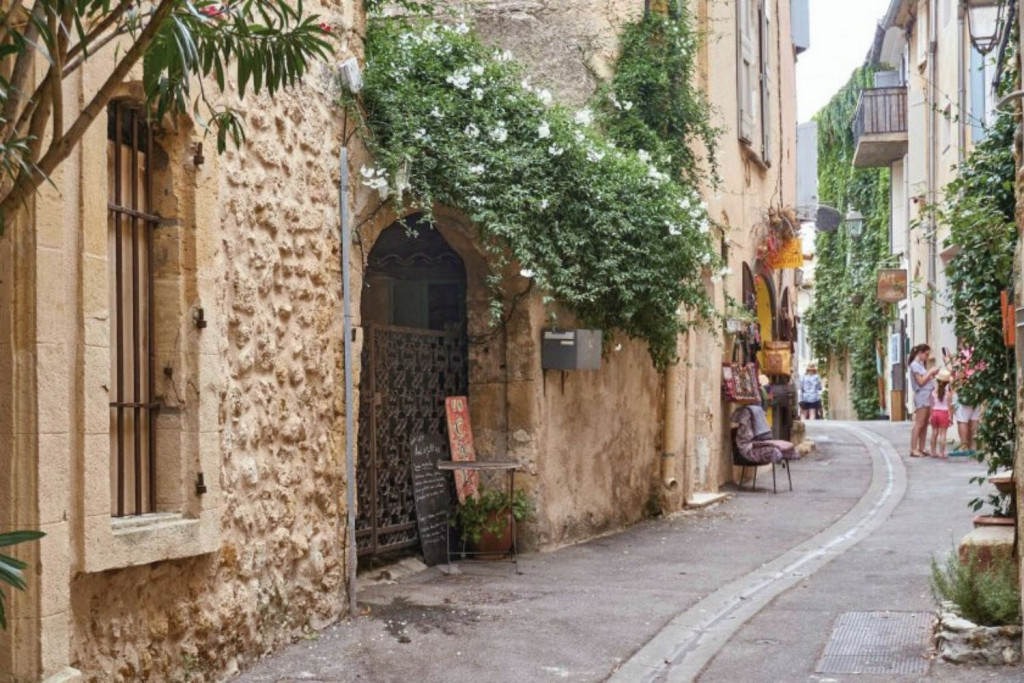
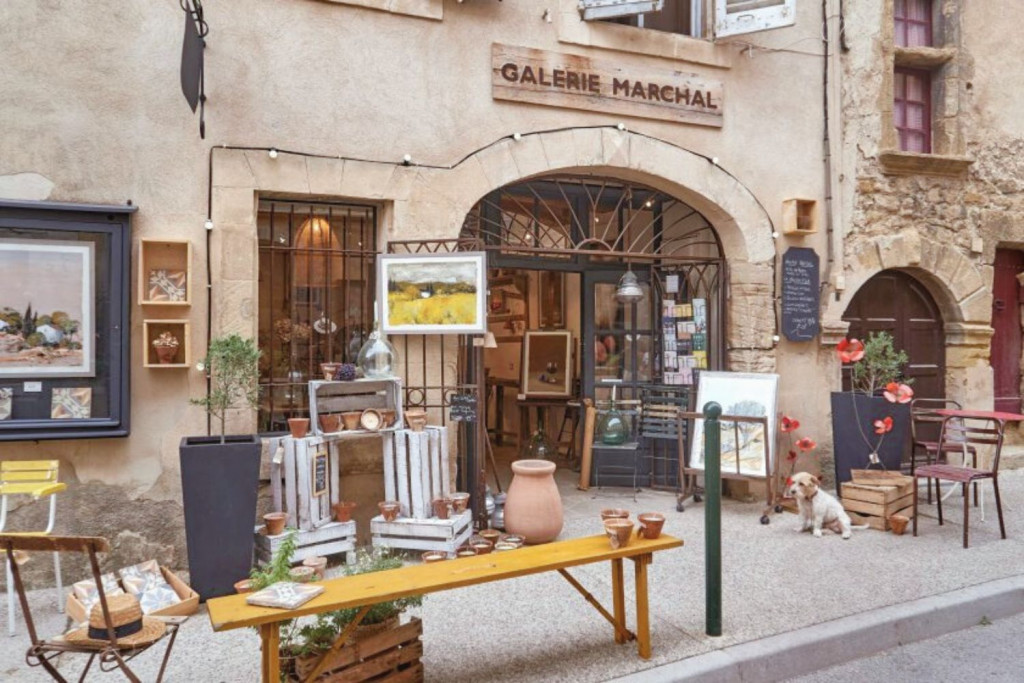
Bonnieux: Exquisite Charm in the Heart of the Luberon Region
While Lourmarin is at the lower elevation within the national park, Bonnieux is high-positioned on a plateau above the valley. Adjacent to our parking spot, the village features a lower church called the Eglise du bas.
The upper church
Ascending 86 stone steps, we reached the Vieille Eglise, an ancient church. The upper church tower dominates the surroundings of this magnificent village. And the church has a fantastic view of Monts de Vaucluse and the vast plains cultivated with plants such as grape vines or fruit trees.
Houses with earth-toned colours
Bonnieux’s hillside houses have typical earth-toned colours, contributing to the village’s authentic charm. With its steep, winding streets, charming fountains, and historic churches, Bonnieux has successfully preserved its original character. Once a prosperous village, it proudly stands as one of the finest hilltop villages in the Luberon region.
The bakery museum
If you stay in France for only one day, you should have a chance to eat either Croissants or Baguettes, or both. They are an essential part of the daily food for French, just like rice for Chinese. The Boulangerie Museum, also known as the bakery museum, showcases a fascinating collection of bread and offers insights into its history.
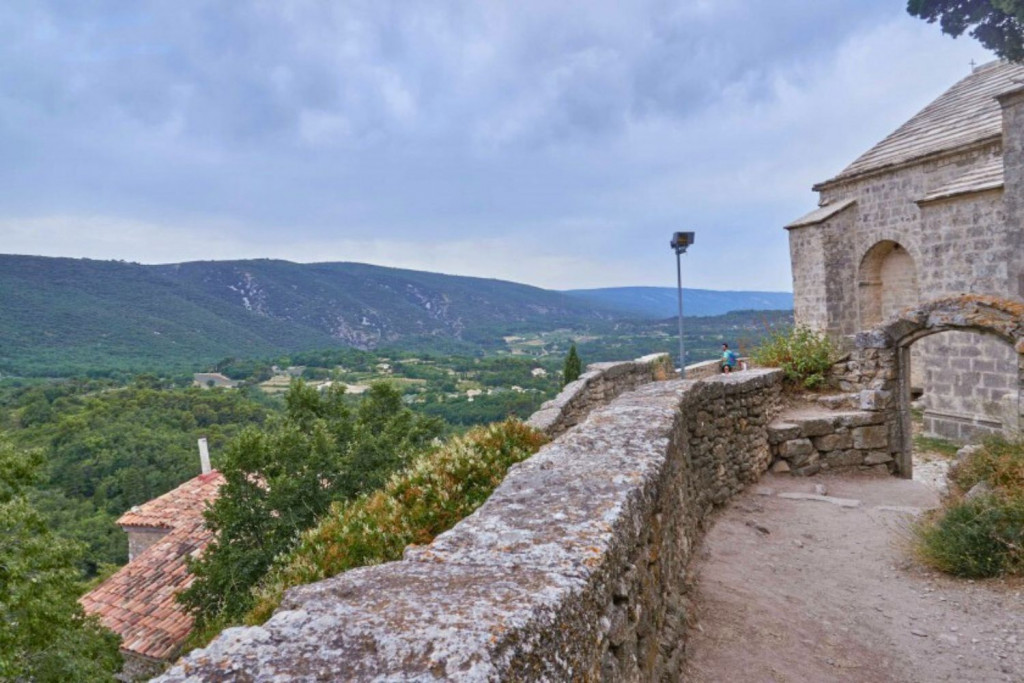
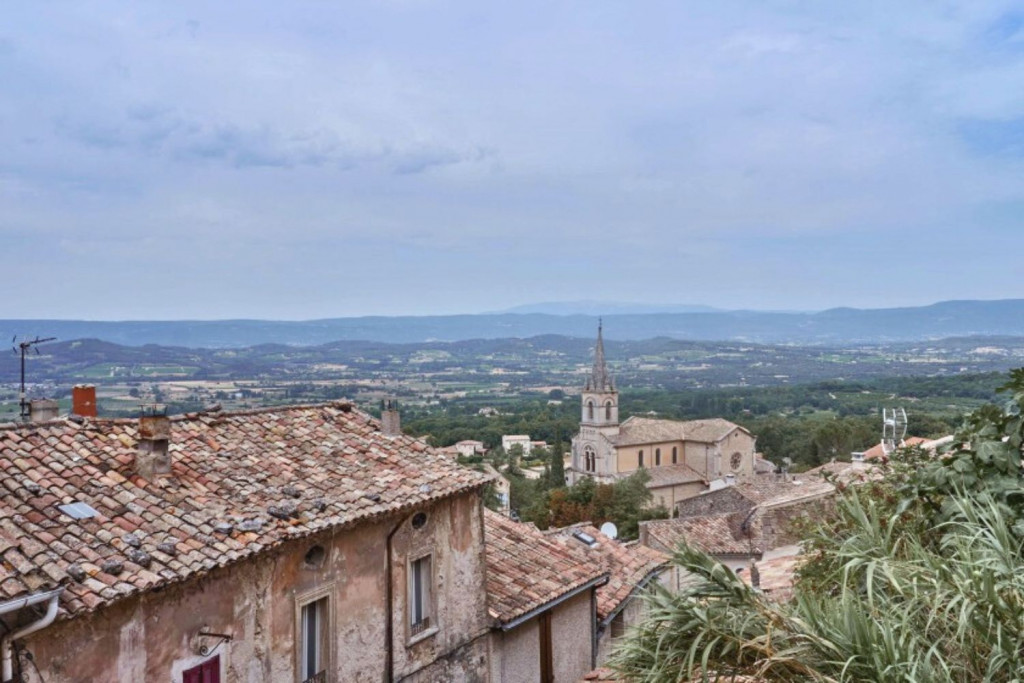
Lacoste, Where Art Comes Alive in a Vibrant Atmosphere
Compared to the other three villages, Lacoste is relatively small in size. This typical Provençal village is perched on a verdant hill, facing the hilltop village of Bonnieux on the opposite slope. The ascent to the hilltop is notably steep.
The village centre
Carefully restored houses in Lacoste are built-in unplastered light limestone. And the paths are laid out with unprocessed cobblestone. I followed the steps up and down through the narrow streets that meander their way through a charming little labyrinth, feeling transported back in time. Many houses have beautiful facades in the renaissance style. On the way up, I took many photos of the elegant belfry from 1793, a wrought bell tower from the church of the XII century. The cute village is delightful and full of atmosphere.
Château de Lacoste
Every step eventually leads to the Château de Lacoste, now owned by the renowned fashion designer Pierre Cardin. The Château, dating from the 16th-18th century, is partially in ruins. Cardin’s efforts to transform Lacoste into a culturally significant place have garnered mixed opinions from the residents. Nonetheless, his commitment has contributed to the growth of tourism, resulting in skyrocketing real estate prices.
The Chateau has an exhibition displaying Pierre Cardin’s private furniture collections. Additionally, from the Chateau, there is a beautiful view of the plain of Bonnieux, Le Mont Ventoux, and Les Alpes.
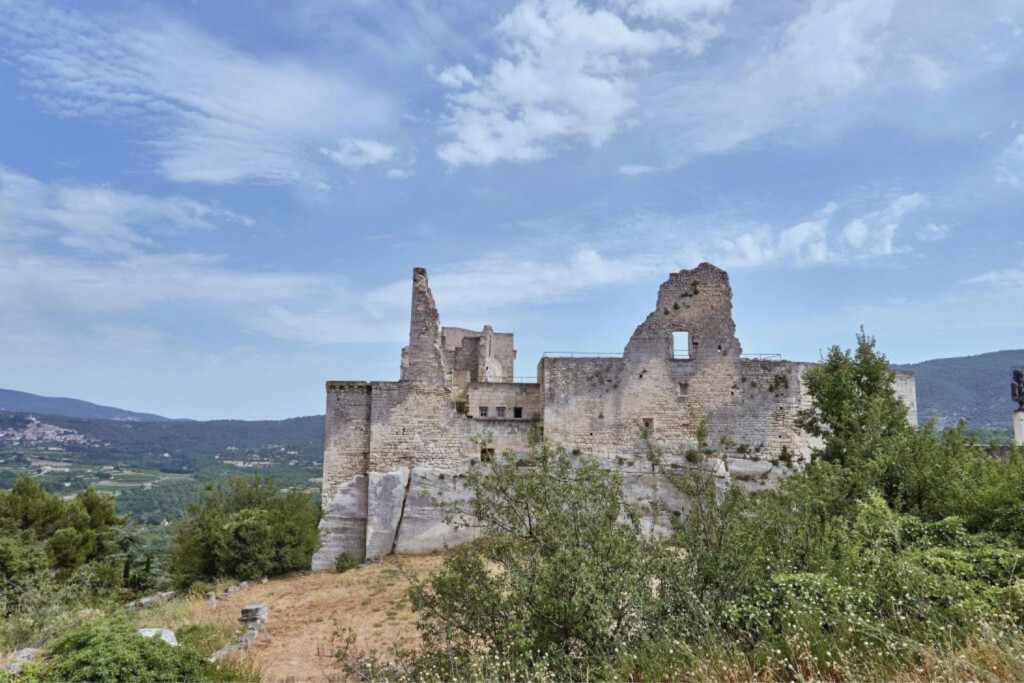
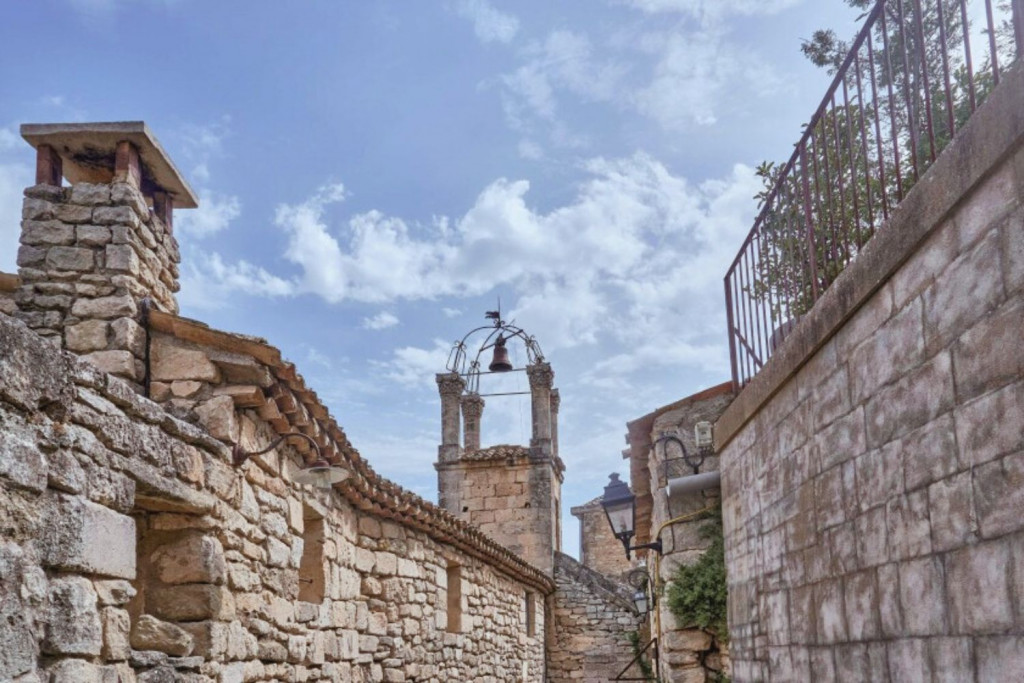
Ménerbes, A Beloved Place for Artists and Creative Souls
Ménerbes is a marvelously preserved village nestled over the Luberon valley. Since Peter Mayle chronicled his first year as a British expatriate in the hilltop village in his book “A Year in Provence,” Ménerbes has gained popularity among tourists and attracted overseas migrants. Despite this, the hilltop village has regained its peaceful atmosphere and remains a lovely small place.
A Serene atmosphere
Blessed by the sunshine and the mild climate, Ménerbes offers a laid-back way of life. Cafés lining the streets, games of boules, and timeless small squares create the foundations of a tranquil existence. As a result, Ménerbes has attracted many artists, such as Nicolas de Staël, French painter of Russian origins, Yves Rousset-Rouard, film producer, and other musicians or comedians to live there.
Corkscrew museum (Musée du Tire-Bouchon)
The corkscrew was invented by a Frenchman in the 12th century. Two kilometres from the village, the picturesque Corkscrew Museum has more than 1,000 different varieties of this magic tool that are on display.
Views from Rue du Portail Neuf
The view from Rue du Portail Neuf, the main street on the outskirts of the Luberon village, is truly breathtaking. As I climbed up the hill, I discovered narrow paths and alleys flanked by beautifully restored medieval houses.
A Charming Open Square
About halfway through the village stands a clock tower, crowned with an unusual wrought iron structure, in a small open square. From the adjacent arch, I enjoyed a more expansive view. Just across from the clock tower, an occasional art exhibition takes place in a townhouse.
Besides, the House of Truffles and Wine of the Luberon is also worth a visit. Surrounded by striking countryside, Ménerbes is a pretty, quiet medieval village in my eyes.
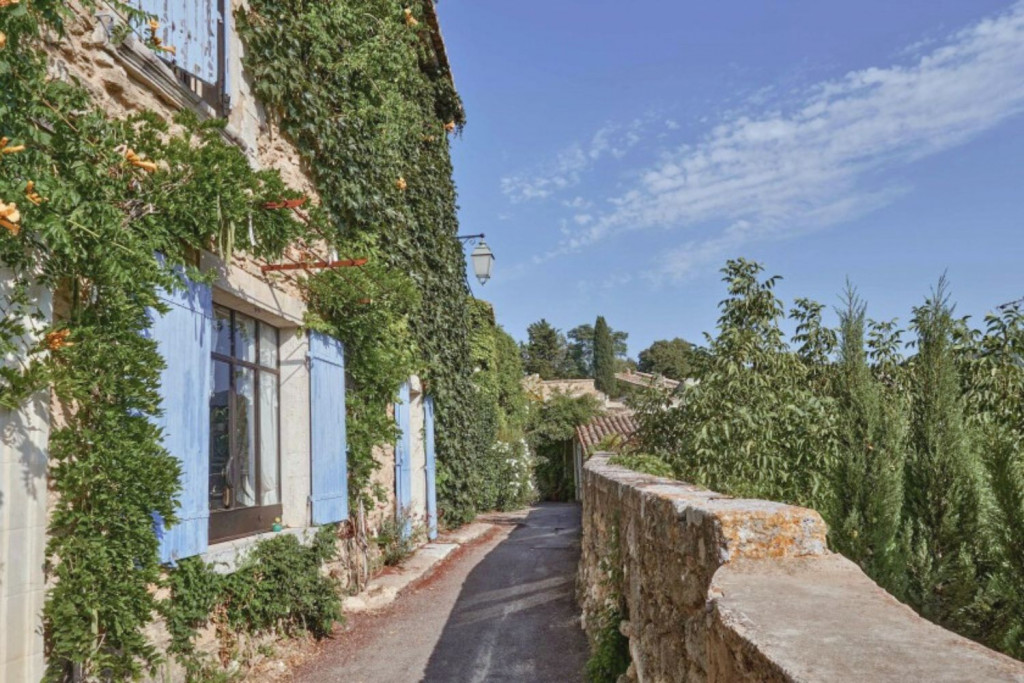
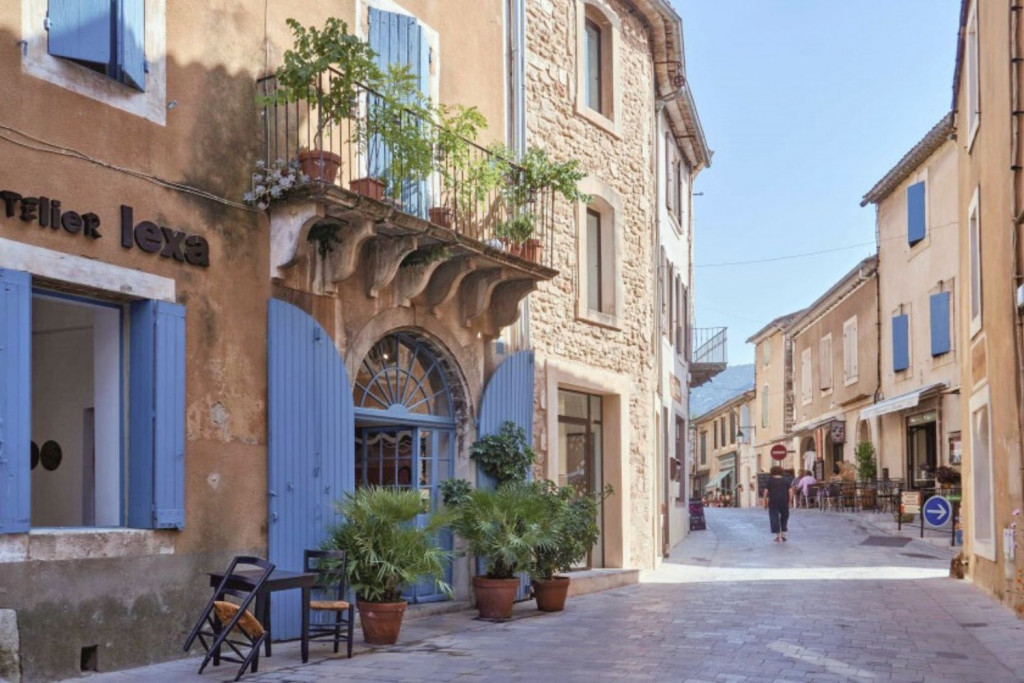
Travel Tips for the hilltop villages in Luberon
Accommodations
The hilltop villages in Luberon are located at a considerable distance from the coastal towns of Cote D’Azur. Nevertheless, each village offers a limited number of accommodations for visitors who wish to spend their days exploring the area. Conveniently, the following accommodations are all situated within one kilometer of the village center:
- Lourmarin: Maison Le Galinier de Lourmarin, La Luberonne
- Bonnieux: Le Clos Du Buis; Le Domaine de Capelongue & Spa
- Lacoste: Les Cabanes de la Fontaine; Villa Douceur
- Ménerbes: Cozy Villa; Holiday Home Le Cèdre
Join an organized tour
Some organized tours offer various ways to explore the Luberon. Visitors who stay in Aix-en-Provence, Marseille, or Avignon can join, for example, the following tours to see several hilltop villages in Luberon.
How to get there
Buses run between the hilltop villages but not so frequently. If you stay in any of these village, it is still possible to take bus. Check the time table before you plan the trip.
However, if you rent a car, it is flexible to plan you trip. Parking places are available outside of the villages. But in the summer seasons, it is difficult to find a parking space. If you only have one day planned for the area, I would suggest to join an organized tour instead.
